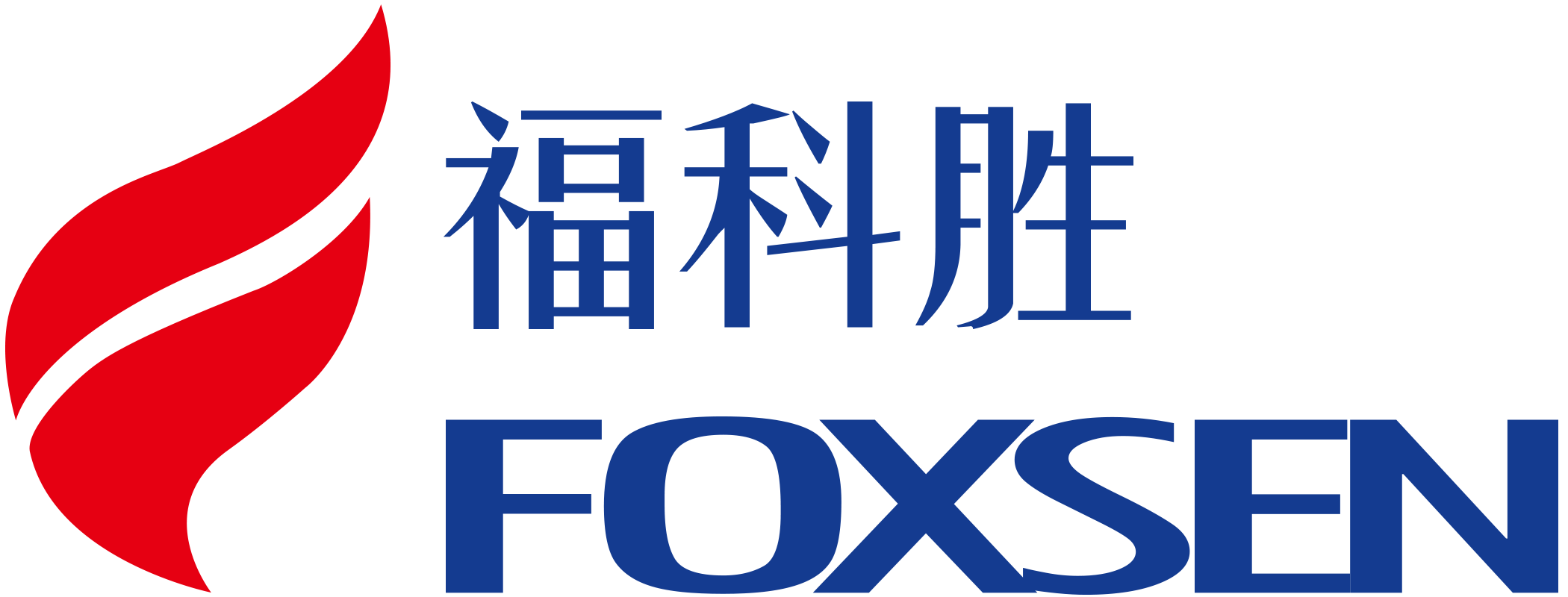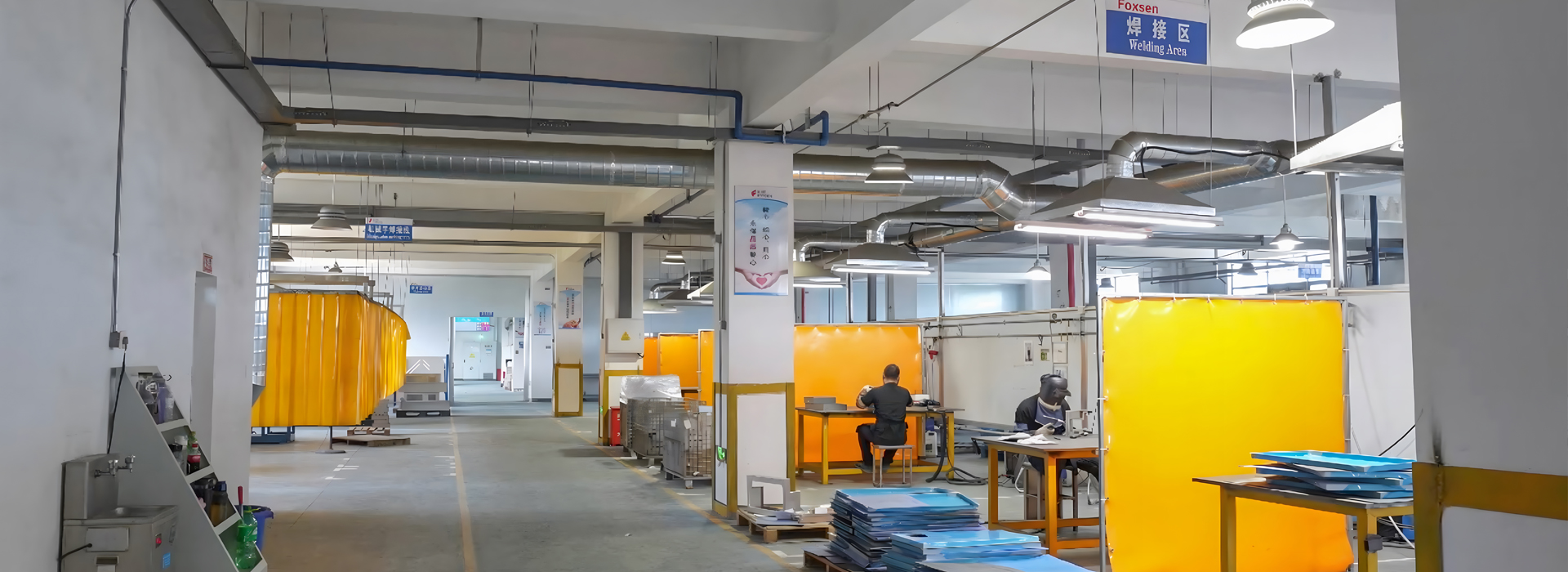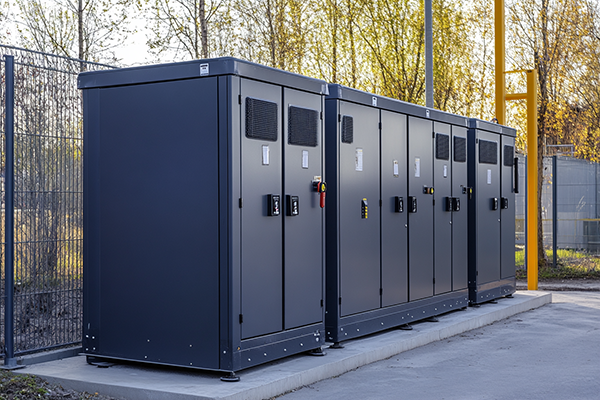
Telecommunication systems require robust protection for their essential equipment. A sheet metal Telecommunication Enclosure serves as a durable and secure box for these components. Its primary function is to shield equipment from weather, dust, and damage. These enclosures ensure that systems operate continuously, keeping us connected every day. They also play a crucial role in organizing and safeguarding telecom devices, which is vital. Without these sheet metal Telecommunication Enclosures, maintaining the safe and smooth operation of systems would be challenging.
Key Takeaways
Sheet metal enclosures keep important equipment safe from weather and damage.
Picking the right material, like aluminum or steel, depends on cost and environment.
IP ratings show how well enclosures stop dust and water; always check them for safety.
Custom designs help enclosures fit specific needs, making them work better.
Modular designs make upgrades easy, repairs simple, and allow future changes.
Key Features of Sheet Metal Telecommunication Enclosures
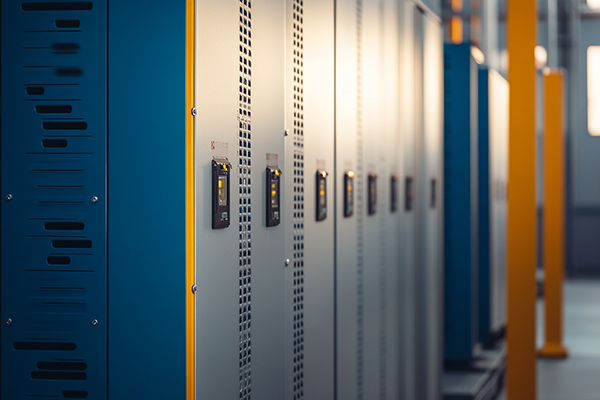
Durability and Strength
Telecom enclosures must be strong and long-lasting. They are made to handle tough conditions. Builders use materials like stainless steel, aluminum, and galvanized steel. These materials make the enclosures sturdy and resistant to damage. The parts are welded, and frames are strengthened for extra support. This design helps them survive harsh indoor or outdoor environments.
Custom cabinets are made for tough industrial uses.
Strong frames and welded parts add more stability.
Materials like aluminum resist rust and physical harm well.
This solid build keeps equipment safe and lasts longer. Studies show sheet metal enclosures last about 23.5 years. Non-metal ones last only 17.5 years on average.
This proves why sheet metal is the best choice for telecom enclosures.
Environmental Protection and IP Ratings
Telecom equipment often faces dust, water, and other dangers. That’s why IP ratings are important. These ratings show how well an enclosure blocks solids and liquids. Always check the IP rating before buying one.
For example:
IP65-rated enclosures block all dust and low-pressure water.
IP67-rated ones can even handle being underwater briefly.
Groups like CSA and UL test these ratings. They mimic real-world conditions to ensure enclosures meet ISO and IEC standards. This testing ensures enclosures work well in tough environments.
IP ratings make comparing products simple.
Testing proves the protection levels are reliable.
These ratings are key for outdoor and industrial uses.
Picking the right IP-rated enclosure ensures your equipment stays safe and works well.
Security Features for Equipment Safety
Security is very important for telecom enclosures. Many have strong locks to stop unauthorized access. Some even have tamper-proof designs to keep intruders out.
Secure locks prevent theft and damage.
Tamper-proof designs give extra safety.
Some enclosures have alarms or sensors for added security.
These features are crucial for outdoor setups where tampering risks are higher. A secure enclosure protects your equipment and keeps services running smoothly.
Customization Choices for Telecom Needs
Telecom enclosures need to fit specific needs. A single design won’t work for every project. Custom designs help meet unique requirements. They improve how enclosures work and make them more efficient.
Features Made for Specific Uses
Custom enclosures include only the features you need. This keeps things simple and lowers costs. For example, special brackets or cable openings can be added. This makes installation faster and easier. It also improves how users interact with the enclosure.
Tip: Share your exact needs with the maker. This ensures the enclosure fits your equipment perfectly.
Better Security and Cyber Protection
Security is very important for telecom setups. Custom enclosures can have strong locks, tamper-proof designs, or alarms. They can also block electromagnetic interference (EMI) to protect data. These features are helpful in risky or outdoor areas.
Works Well with Current Systems
Custom enclosures can match your existing tools and systems. Cooling units, power supplies, or monitors can be added easily. This makes upgrades and repairs smoother and faster.
Ready for Growth and Future Changes
Telecom technology changes quickly. Custom enclosures can grow with your needs. You can add parts or expand space later. This keeps your enclosure useful as technology improves.
Here are some benefits of custom designs:
User-Friendly Design: Easy to use and access for better functionality.
Cloud Features: Remote monitoring and backups for better control.
Rules Compliance: Meets local laws to avoid problems.
Smart Sensors: Real-time data helps make better decisions.
Modular Designs for Flexibility
Modular enclosures are a great custom option. You can change or add sections as needed. For example, new compartments can hold extra equipment. Removing parts can save space. This makes modular designs perfect for changing environments.
Note: Modular designs make repairs easier. Technicians can fix one section without taking apart the whole enclosure.
Customization isn’t just about looks or convenience. It’s about making enclosures work better for your needs. A custom telecom enclosure protects your equipment and improves its performance over time.
Materials Used in Telecommunications Enclosures
Aluminum: Light and Rust-Resistant
Aluminum is a great material for telecom enclosures. It is light and doesn’t rust, making it perfect for outdoor use. These enclosures are easy to move and set up. This is helpful for projects that need frequent changes.
Aluminum performs well in key areas. It boosts signal quality by 25-40%. It also lowers heat resistance by 30% and is 15% lighter than steel.
These advantages make aluminum a strong choice for telecom enclosures. Its rust resistance ensures it lasts long, even in tough weather.
Stainless Steel: Strong and Stylish
Stainless steel is another top material for enclosures. It looks shiny and professional, adding a polished touch. Besides its appearance, it is very strong and durable. Its unique property makes it tougher and allows thinner designs, saving money.
Stainless steel doesn’t rust from rain or moisture.
It needs little upkeep, cutting down maintenance costs.
It handles impacts and extreme temperatures well.
For outdoor use, stainless steel stays clean and strong over time. Its durability and low maintenance make it a favorite for electronic enclosures.
Carbon Steel: Affordable and Tough
Carbon steel is a budget-friendly option with good strength. It’s often used where extreme rust resistance isn’t needed. It works well for many industrial and commercial uses.
It costs less than stainless steel but still offers solid durability. Carbon steel enclosures handle tough conditions without losing performance. This makes it a smart choice when cost is a concern.
Choosing the right material—aluminum, stainless steel, or carbon steel—ensures your enclosure fits your needs.
Picking the Right Material for Telecom Enclosures
Choosing the best material depends on how it will be used. First, think about where the enclosure will be placed. Different materials have special benefits. Picking the right one helps it last longer and work better.
Things to Think About
When picking materials, I look at these points:
Weather Conditions: Outdoor enclosures need materials that don’t rust or corrode.
Lightweight Needs: Aluminum is great for setups that need easy moving.
Cost Limits: Carbon steel is strong and budget-friendly.
Looks: Stainless steel gives a shiny, professional appearance.
These points help decide which material works best.
Matching Materials to Their Jobs
Here’s how I choose materials for different uses:
Aluminum: Best for outdoor use. It’s light to carry and doesn’t rust in bad weather.
Stainless Steel: Great for indoor use. It looks nice, handles impacts, and needs little care.
Carbon Steel: Good for saving money. It’s strong and works well indoors where weather isn’t harsh.
Tip: For enclosures in risky areas, stainless steel is the safest choice. It’s strong and resists damage.
Why Sheet Metal Fabrication Matters
Sheet metal fabrication helps make enclosures fit specific needs. I’ve seen how custom designs make equipment fit perfectly. This process also makes enclosures stronger and more useful. It’s very important for telecom projects.
Picking the right material and using sheet metal fabrication ensures the enclosure works well. It’s about balancing cost, strength, and usefulness to protect your equipment.
Applications of Sheet Metal Telecommunication Enclosures
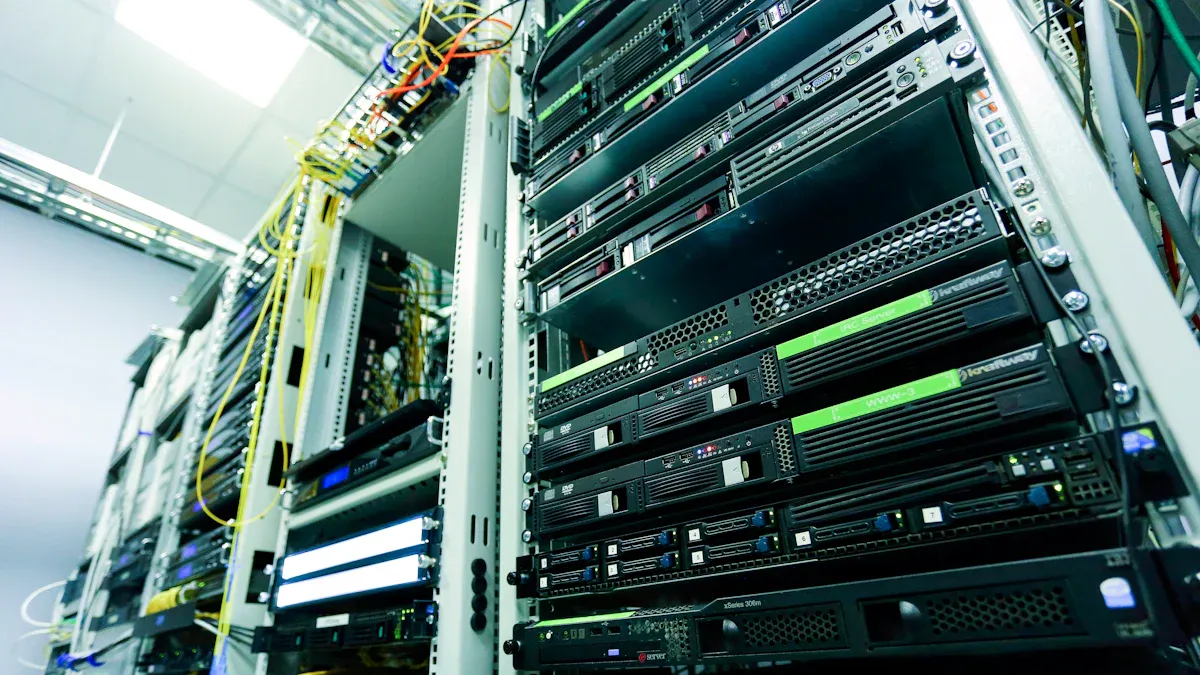
Sheet metal enclosures are crucial for many telecom uses. They keep equipment safe, ensure smooth operations, and work in various settings. Let’s explore their main uses.
Protecting Network and Wi-Fi Equipment
These enclosures hold network and Wi-Fi devices securely. They shield routers, servers, and wireless tools from dust, water, and heat. NEMA-rated enclosures are great for tough conditions. They work well outdoors or in industrial areas.
They block damage from rain, heat, and other hazards.
Custom sizes and features fit different project needs.
Locks and alarms stop theft or tampering.
The material used is also important. It should protect while avoiding signal issues. Aluminum enclosures are light, rust-proof, and long-lasting. These features make them ideal for Wi-Fi systems in cities or remote places.
Securing Base Stations and Antennas
Base stations and antennas need strong protection to work well. Sheet metal enclosures are excellent for this. They block electromagnetic interference (EMI) and keep signals clear.
They guard against physical harm and bad weather.
They handle wind, rain, and snow in outdoor setups.
Their sturdy build ensures reliable communication.
For example, base station enclosures often have tamper-proof locks and strong frames. These features stop unauthorized access and improve security. By protecting antennas, they help keep networks running smoothly.
Housing IoT Devices in Smart Cities
Smart cities depend on IoT devices to work better. These devices manage traffic, energy, and safety. They need protection to function in busy urban areas. Telecom enclosures are the perfect solution.
They protect IoT devices from dust, water, and heat changes.
Custom designs fit into smart city systems easily.
Modular options allow for future growth as cities expand.
For instance, enclosures for smart lights or sensors must be tough and weatherproof. These enclosures help IoT devices last longer, even in harsh conditions. By securing these tools, they support smart city technologies.
Sheet metal enclosures are essential for these uses. They protect equipment, improve performance, and help telecom and smart city systems grow.
Securing Cable TV and Broadband Equipment
Protecting cable TV and broadband tools is very important. Problems like electromagnetic interference (EMI) can mess up signals and cause bad service. Sheet metal enclosures help stop EMI from affecting equipment. They block different types of EMI, keeping systems running smoothly.
These enclosures also guard against damage from dust, water, and heat. For example, they keep sensitive parts safe from harm. Picking enclosures with good IP ratings helps protect equipment better. IP54-rated ones work well indoors. IP66 or IP67-rated ones are best for outdoor setups. These ratings ensure safety in tough conditions.
Security is also key. Locks, tamper-proof designs, and alarms stop people from breaking in. This is especially helpful for outdoor equipment that’s easier to access. By combining EMI protection, environmental safety, and security features, these enclosures keep cable TV and broadband systems working well.
Use in Harsh and Outdoor Environments
Outdoor telecom tools face tough weather like rain and heat. Picking the right enclosure is important for keeping them safe and working well.
Tests like UL certifications and IP ratings show how strong enclosures are. For example:
I suggest using IP66 or IP67-rated enclosures for harsh weather. These ratings keep equipment safe during storms or floods. Materials like stainless steel and aluminum make enclosures stronger. Stainless steel doesn’t rust, and aluminum is light and rust-proof, making them great for outdoor use.
Modular designs make repairs and upgrades easier. Technicians can fix one part without taking apart the whole enclosure. This saves time and money.
The right enclosure protects equipment and makes it last longer. It’s a smart choice for keeping systems reliable in tough conditions.
Benefits of Sheet Metal Telecommunication Enclosures
Protection Against Environmental Hazards
Telecommunications enclosures keep equipment safe from weather and dust. They block water, dirt, and extreme heat or cold. This helps systems work without stopping. Outdoor enclosures with IP66 or IP67 ratings are great for bad weather.
Fire safety is also important. Experts study how fires create harmful gases. This research helps make safer designs for enclosed spaces. Explosion-proof enclosures use strong materials to prevent accidents. These features make enclosures essential for telecom systems.
Enhanced Equipment Safety and Longevity
These enclosures protect devices from damage, rust, and tampering. This keeps equipment working well for a long time. Tamper-proof locks and strong frames are helpful in risky areas.
Materials like stainless steel and aluminum make enclosures last longer. Aluminum doesn’t rust, and stainless steel handles impacts and tough conditions. These materials are great for protecting telecom tools indoors and outdoors.
Climate Control and Fire Safety
Keeping the right temperature inside enclosures is very important. Too much heat can harm equipment, and moisture can cause rust. Many enclosures have cooling systems, heaters, or vents to control temperature and humidity.
Fire safety is another big benefit. Tests check if enclosures stop fires from spreading. For example:
These features make enclosures safe and reliable for protecting important telecom equipment.
Radiofrequency Shielding for Signal Protection
Radiofrequency shielding is key to keeping telecom equipment safe. Electromagnetic interference (EMI) can mess up signals and lower performance. To stop this, enclosures use materials like copper or aluminum. These materials block outside electromagnetic fields from harming the equipment inside.
Faraday enclosures are a good example of shielding. They cancel out interference by redistributing electrical charges. This keeps signals clear in high-speed circuits and RF systems. These enclosures also stop EMI from leaking out and disturbing other devices. Their design helps ensure reliable communication in sensitive areas.
Shielding enclosures are very useful during electronics testing. They block outside interference, making test results accurate. Without shielding, signals can get messed up, causing mistakes. Conductive materials create a protective layer that keeps equipment working well.
Here’s why shielding enclosures are important:
They block outside electromagnetic interference.
They stop EMI from affecting nearby devices.
They keep signals clear for high-speed circuits and RF systems.
These features make shielding enclosures a must-have for telecom setups. Whether protecting base stations or IoT devices, they help systems work smoothly. I suggest using enclosures with strong shielding for sensitive equipment. This ensures reliable performance and long-lasting use.
Customization and Design Considerations
Special Designs for Unique Needs
Custom designs make telecom enclosures work better for specific tasks. They can be built to handle different environments, heat levels, or rules. For example:
Custom enclosures also help with quick setups. For instance, hundreds of enclosures were installed across three continents for 5G upgrades. These enclosures made systems safer and easier to expand.
Handy Features Like Doors and Clear Covers
Useful features make enclosures easier to use. Hinged doors let you open them quickly for repairs. Clear covers allow you to see inside without opening them. These save time and prevent mistakes.
I’ve seen modular enclosures that let you add or remove parts. This makes them flexible for future changes. Clear covers are great for places like data centers where constant checking is needed.
Grounding for Electrical Safety
Keeping equipment safe from electrical problems is very important. Grounding connectors link metal parts to the power system ground. This stops shocks and protects devices during faults.
Tests ensure grounding works well. One test checks resistance between the ground pin and metal parts. Another test uses high current to check the ground connection’s strength. These tests show why grounding is key for safe and reliable enclosures.
Modular Designs for Growth and Easy Repairs
Modular designs have changed how we use telecom enclosures. They are flexible, making them great for growing businesses or new technologies. These systems make it simple to expand and fix equipment.
The best thing about modular enclosures is their adaptability. Companies can add sections as they grow without disturbing current setups. This means the enclosure can grow with the business. Repairs are also easier. Technicians can work on specific parts without taking apart the whole system, saving time and effort.
Here’s a table of modular design benefits:
Modular enclosures also make targeted repairs possible. Unlike older systems, you don’t need to take apart large sections. This saves time and keeps systems running. Adding new tools is easy, which lowers costs and avoids delays.
Tip: Modular designs are great for businesses planning to grow. They offer flexibility without needing a full replacement.
Choosing modular enclosures helps businesses stay ready for the future. They make repairs easier and allow systems to grow as needed.
Sheet metal telecommunication enclosures are crucial for keeping telecom equipment safe and organized. Their strong build and flexible designs help meet the needs of the growing telecom industry. The increasing use of metal stamping parts shows their value in making antennas and protective covers. These enclosures protect equipment from tough weather and damage, helping it last longer. They also guard against tampering, making them essential for dependable telecom systems.
Note: Picking the right enclosure improves safety and helps the industry grow.
FAQ
1. What do sheet metal telecommunication enclosures do?
These enclosures keep telecom equipment safe from weather, tampering, and interference. They help devices work well and last longer. I’ve noticed how they boost safety and performance indoors and outdoors.
2. How can I pick the best material for my enclosure?
Think about where it will be used and your budget. Aluminum is great for outdoor use because it doesn’t rust. Stainless steel is strong and looks nice. Carbon steel is cheaper and works well indoors. I always choose materials based on project needs.
3. Can telecom enclosures be made to fit special needs?
Yes, they can be customized to meet specific requirements. Features like modular parts, easy-to-open doors, and grounding connectors make them better. I suggest telling manufacturers exactly what you need for the best results.
4. What are IP ratings, and why do they matter?
IP ratings show how well enclosures block dust and water. For example, IP66 enclosures stop strong water sprays, and IP67 ones can handle being underwater. I always check these ratings to make sure equipment stays protected.
5. Are modular enclosures a good choice for telecom systems?
Yes, modular designs are very flexible. You can add or remove parts easily. Repairs are quicker, and upgrades are simple. I’ve seen companies save time and money by using modular enclosures for growing systems.
